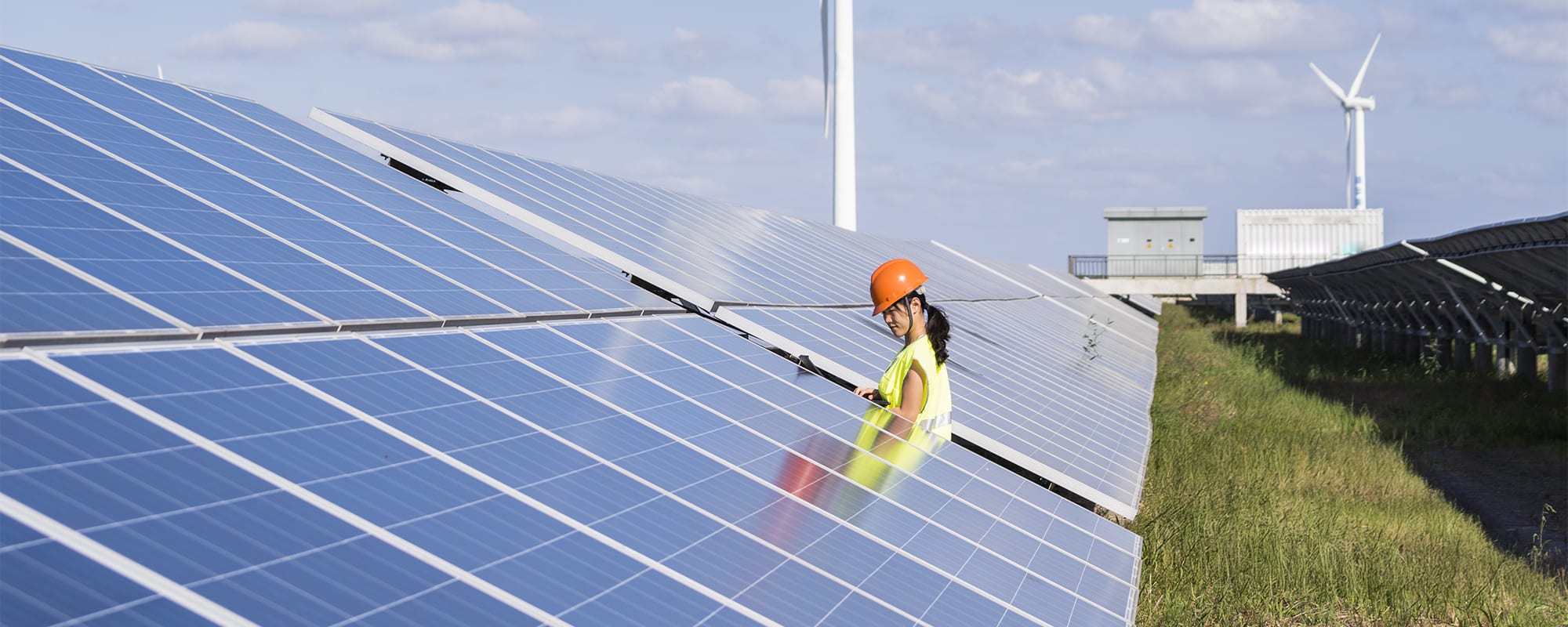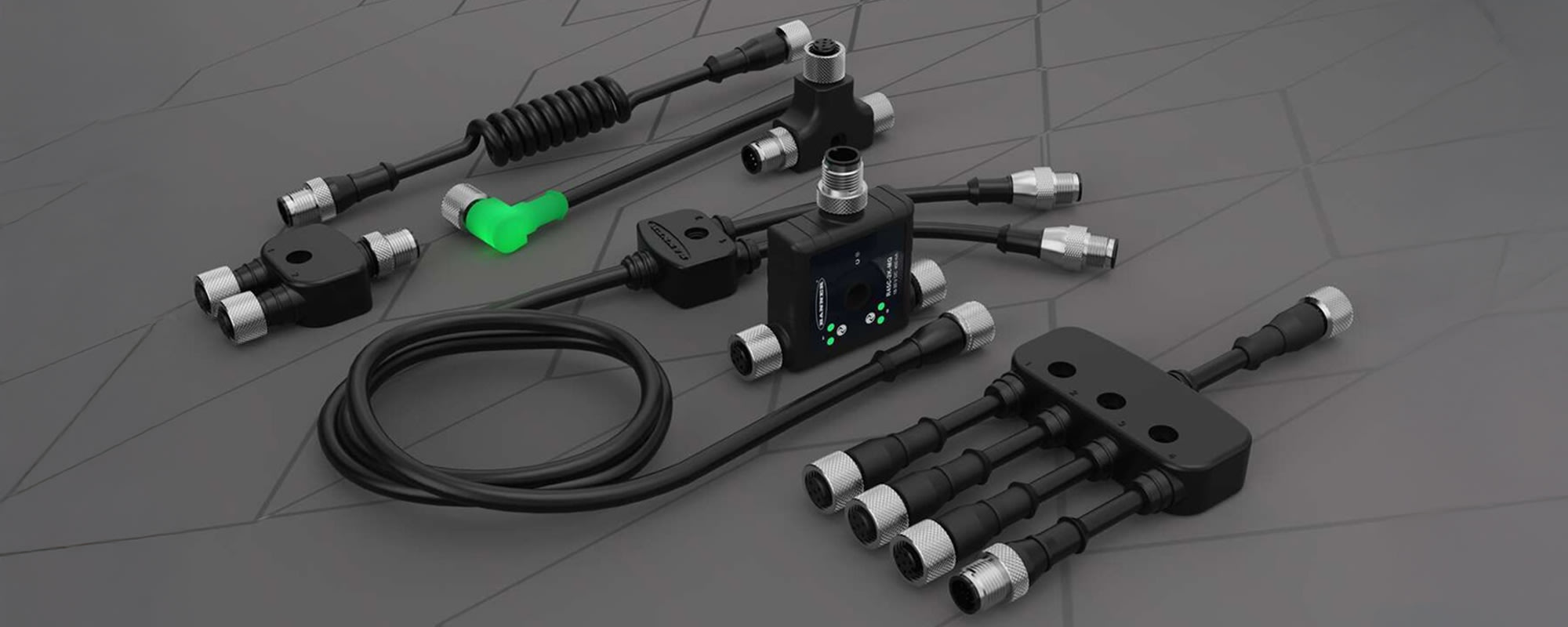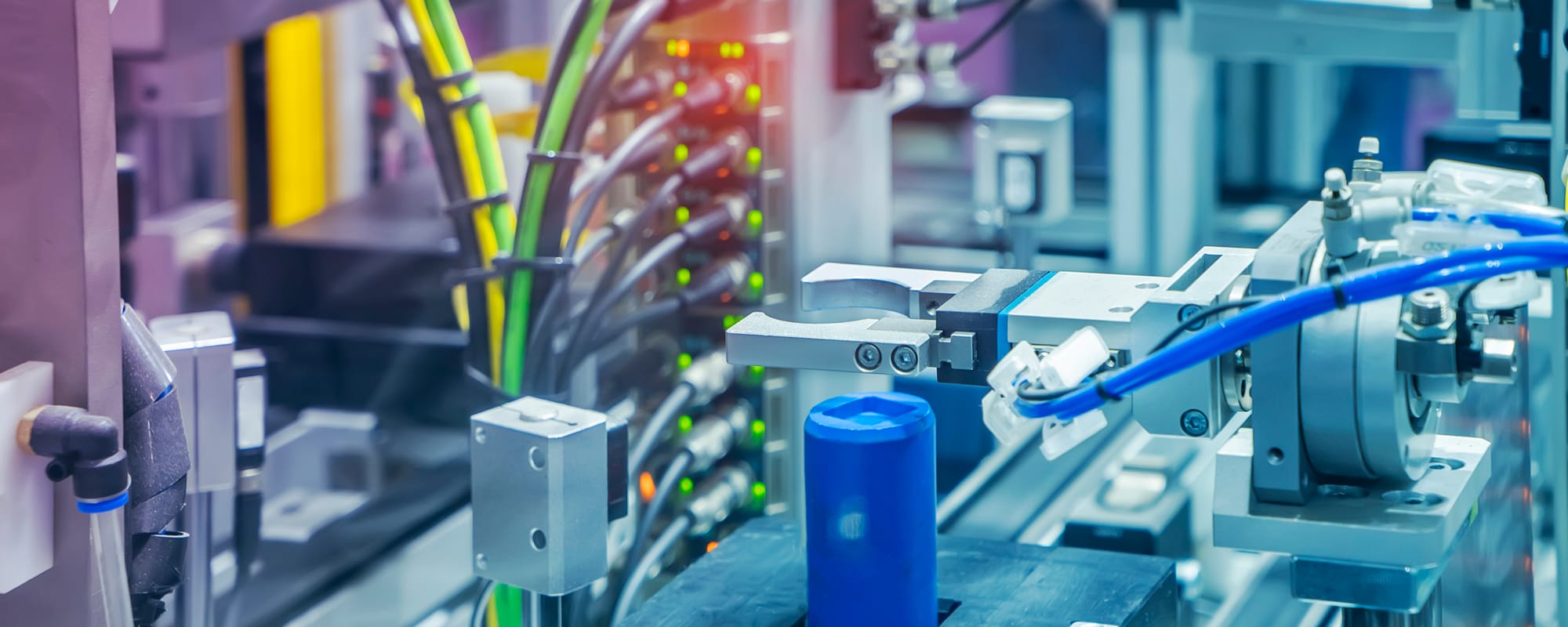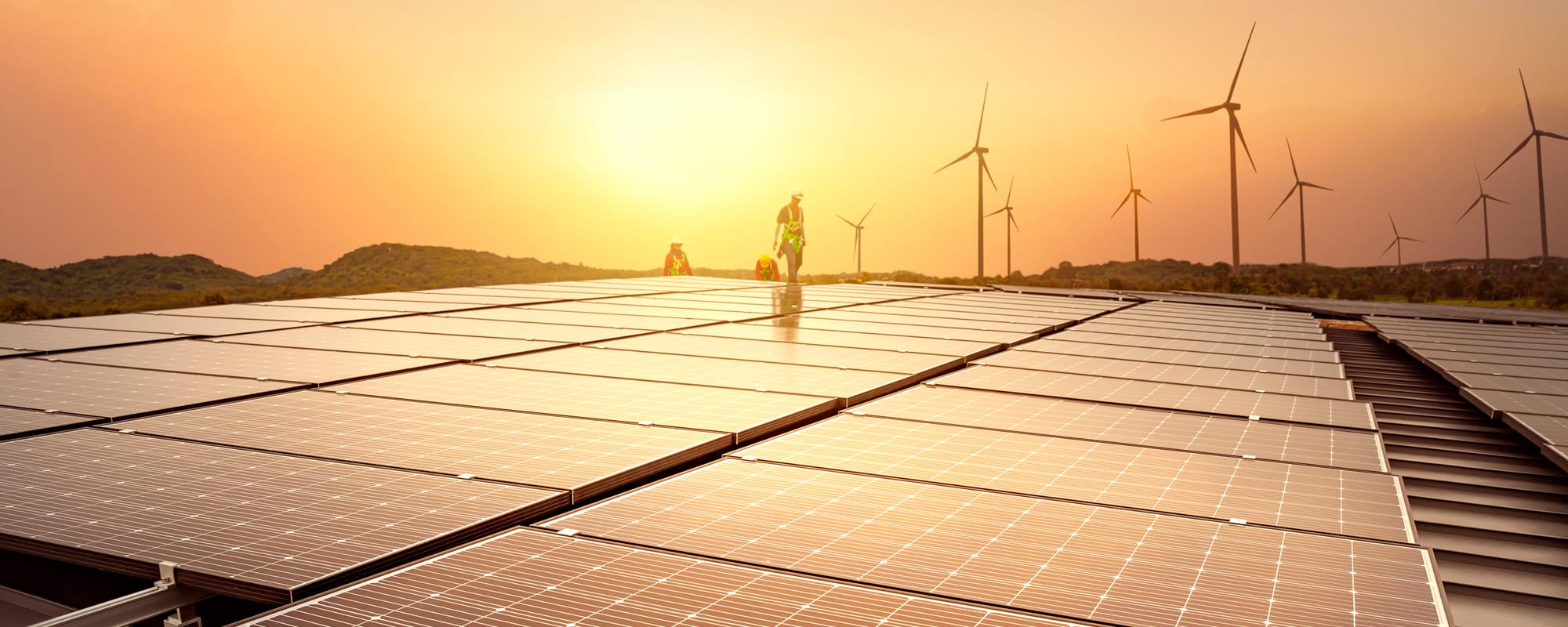Energy storage systems are essential to establishing a smarter, more sustainable, efficient, and distributed power grid. We spoke with John Turner, the Vertical Growth Leader for Energy Storage and Renewables at nVent HOFFMAN, to learn more about these systems and the key components that help connect and protect them, including busbars and air conditioners.

The energy storage industry is booming thanks to steady global interest in sustainability coupled with growing power demands, the benefits of grid flexibility and distribution, efficiency improvements, and cost reductions elicited by economies of scale. The global energy storage systems market was valued at $251.14 billion in 2024 and is expected to grow to $271.73 billion in 2025.
We recently spoke with John Turner, the Vertical Growth Leader for Energy Storage and Renewables at nVent HOFFMAN, to learn more about energy storage systems. Here, John addresses topics ranging from benefits and trends to key enabling components for connection and protection, including busbars and air conditioners, and introduces the nVent difference.
Hi John. Please introduce yourself and tell us about your role at nVent HOFFMAN.
I went to the University of Minnesota College of Science and Engineering for my Bachelor of Engineering degree and to Carlson School of Management for my MBA, focusing on corporate strategy and finance. I have been at nVent for almost seven years in various product management roles covering large enclosures, electrical safety, and air conditioners. In my current role, I’m responsible for understanding the industry landscape and which new product introductions are required to help solve our customers’ greatest pain points. As a subject matter expert, I help customers determine which existing products satisfy their application demands.
Please also provide us with a brief introduction to nVent and nVent HOFFMAN.
nVent is a global leader in electrical connection and protection. At nVent, we believe that safer systems ensure a more secure world. Our inventive electrical solutions include liquid cooling, climate control, electrical distribution and grounding, and enclosure solutions engineered to help customers connect and protect their critical electrical infrastructure. I am a part of the HOFFMAN business unit but have responsibilities across nVent.
You joined us today to talk about energy storage. So, let’s dive in. What should people know?
Energy storage is critical to achieving sustainable energy goals. It decouples the time of generation from the time of use, which is critical to establishing a smarter, more efficient, and more distributed grid. Our current electrical grid matches the power generation to the energy demand in real time. As we transition to renewable energy, such as solar and wind, the generation capacity cannot be turned on as easily as it can in our traditional grid. Energy storage systems bridge this gap by storing excess solar or wind energy generated when there is no demand and distributing it when demand arises. They’re also critical to maximizing our traditional power generation by storing extra generation capacity whenever there’s lower demand. Energy storage systems can store this extra energy when it’s cheaper to generate and then distribute it when demand picks up. This not only provides customers with cheaper energy; it allows us to achieve peak demand that is greater than the existing power generation at a point in time. As such, energy storage installations are expected to continue increasing by a compound annual growth rate greater than 30% for the foreseeable future.
Battery energy storage systems (BESS) are being utilized in residential, commercial, industrial, and utility applications to improve both the utilization of our power generation resources and the power quality delivered. Key BESS components include batteries, power conversion systems, automation and controls, fire and gas detection and suppression systems, liquid cooling systems, air conditioners (ACs), electrical distribution and grounding systems, and enclosures. Together, these subsystems form a single solution that effectively connects and protects batteries out in the field.
You also wanted to talk about air conditioners and busbars. What role do these products play in energy storage systems?
Climate control solutions are critical to ensuring that batteries, power conversion and control systems, and other critical enabling devices stay within the rated operating temperature range. Batteries especially are temperamental when hot or cold, so the ability to heat and cool them is essential. Most manufacturers’ lithium-ion battery warranties require the batteries to stay within two degrees of 25°C (or 77°F).
When battery modules are liquid cooled, ACs are paired with chillers and fluid distribution systems. The liquid cooling system manages the battery temperature, while the AC manages all the other thermal loads coming from the controls, power conversion system, and solar gains. ACs are also used to manage humidity, ensuring that the moisture levels inside a BESS enclosure don’t start causing problems.
Busbars are essential conductors within energy storage systems, acting as the backbone for electrical current flow. They facilitate the bidirectional movement of current, enabling both charging and discharging of the storage medium, such as batteries in a BESS or pumped hydro or thermal storage. These vital components connect all the electrical elements within the system, from individual cells or modules to inverters and other power conversion equipment.
Typically crafted from highly conductive materials, like copper or aluminum, busbars are designed in various shapes and sizes — ranging from flat bars and rods to more complex geometries — to accommodate specific current-carrying requirements and system layouts. Their size and material are carefully chosen to minimize resistance and efficiently handle the high currents often encountered in energy storage applications.
Beyond normal operation, busbars also play a crucial safety role. They provide a low-impedance path to ground in the event of a system fault, allowing large fault currents to be safely diverted and reliably protecting equipment and personnel. Without properly designed and connected busbars, energy storage systems would not only be inefficient but also pose significant safety risks. In large-scale energy storage deployments, the robust design and implementation of busbar systems is even more critical due to the increased power levels and complexity involved, as they ensure efficient power delivery and reliable operation while maintaining the highest safety standards.
What are common challenges in selecting and implementing air conditioners and busbars in energy storage systems? Do you have advice for overcoming these challenges?
When using air conditioners in BESS applications, it’s critical to select an AC with the right capacity and ensure that there’s proper component spacing for the cool air to circulate. If the air can’t reach the components it’s supposed to cool, it can create hot spots that can lead to long-term failure. If the AC is undersized or doesn’t have a strong enough airflow circuit, it’ll have to work harder and longer to try — but ultimately still fail— to achieve the proper cooling or heating. Ensuring that the AC can provide the right amount of cooling and get it to all the right places is critical when designing them into a BESS application.
Busbar selection requires careful consideration of several factors, including the thermal characteristics of the energy storage system, space constraints, and connection methods. Adhering to industry standards for allowable ampacities and understanding the maximum temperature ratings of all system components is crucial. Consulting with specialists in electrical distribution and connection systems design is highly recommended. Because busbar design and installation can be complex and integration into production systems can be challenging, upfront planning of the physical design and installation process is essential as well.
Please introduce us to nVent’s energy storage solutions portfolio.
nVent offers a full battery protection system comprised of core products that are easy to design, procure, assemble and install. To ensure that our customers’ solutions will satisfy field requirements, we’ve designed our products for compliance with UL 9540 Energy Storage System Requirements, bringing together our enclosure, chiller, fluid distribution system, air conditioners (such as our SpectraCool portfolio), electrical distribution and grounding solutions (such as our Flexibar product), and lightning protection products. With this robust single-source portfolio of products, we’re able to help our customers reduce design time, simplify procurement, improve assembly processes, and achieve a lower total cost of energy (TCOE).
Please tell us more about nVent HOFFMAN’s SpectraCool air conditioners.
Our SpectraCool ACs are designed to operate outdoors, featuring a rugged design, rated operating temperatures spanning -40°C to +55°C, and IP56 and UL/NEMA 3R, 12, and 4X environmental resistance. They also have integrated heaters, which are essential for energy storage systems in environments like Minnesota since, if batteries need to be at 25°C ±2°C and they aren’t constantly charging and discharging, you’ll need supplemental heat to stay within range. These characteristics make them great solutions for BESS applications.
Their dual heating and cooling capability is also useful in other applications and environments and enables more versatile systems with a single part number.
Available with a broad capacity range spanning 800–20,000btu, our SpectraCool AC product family provides reliable protection for BESS in applications extending from residential to Utility-scale. With our U.S. manufacturing, live training for all authorized distributors, and local support, we’re also well positioned to ensure our customers receive reliable, dependable cooling solutions to protect their BESS.
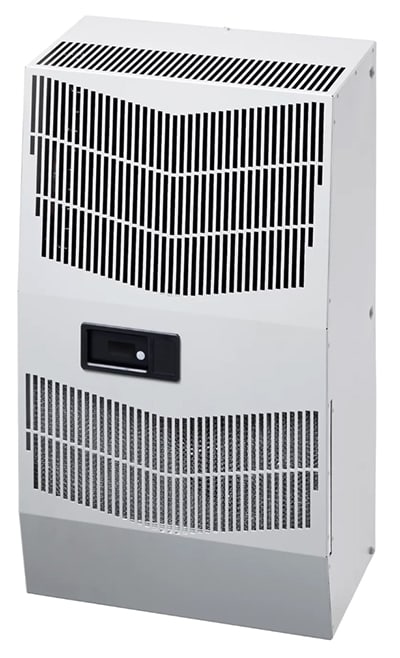
Please tell us more about the nVent ERIFLEX Flexibar Advanced busbar series.
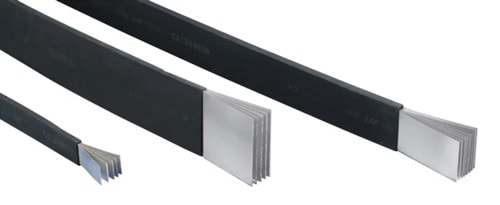
Our ERIFLEX Flexibar line offers flexible alternatives to traditionally rigid busbar and cables, which provides several key advantages. It allows for a tighter bend radius than cable and eliminates the need for lugs, while its flexibility mitigates the tolerance issues associated with a rigid busbar. Suitable for a wide range of low-voltage applications, our Flexibar Advanced busbars can handle current ratings spanning 80 to 6,000A. Their patented design ensures greater flexibility and long-lasting insulation with halogen-free, flame-retardant, and low-smoke properties. We also offer custom-engineered Flexibar solutions and pre-kitting options that can significantly reduce on-site installation time.
Are there any success stories you’d like to share about nVent’s energy storage solutions portfolio?
We’ve helped many BESS OEMs accelerate their design, procurement, and manufacturing and improve their system longevity and reliability by working with them early in the design phase, which allowed us to bring all the critical components into an nVent system optimized for their needs. The fact that we can provide complete, single-supplier solutions supported by highly experienced and field proven engineering and design resources is a key benefit. There’s real value in understanding how all the components go together best, and it saves customers from the hassle of having to work with many different suppliers on a single system design, which can hasten design cycles and improve reliability.
We have critical components energy storage systems need, we have the engineering expertise to know how they fit and work best together, and we have the robust distribution network needed to get all our components to customers quickly and easily. Together, that equals real value.
Anything else you’d like our readers to know about nVent, its extensive portfolio of energy storage solutions, SpectraCool air conditioners, or Flexibar Advanced busbars?
nVent’s liquid cooling, climate control, enclosure, and electrical connection solutions are ready to support evolving customer requirements, advancements in BESS technology, and the new challenges they elicit. For instance, heat is a critical point of failure, and as BESSs deliver higher amperages and energy densities in smaller footprints, a growing customer concern. We also offer an extensive selection of standard and custom enclosures designed for rugged environmental resistance, ease of integration, and high-reliability performance.
Connect and protect your energy storage systems with nVent and RS
nVent designs, manufactures, markets, installs, and services high-performance products and solutions engineered for mission-critical equipment, essential processes, and commercial and residential buildings for a more sustainable and electrified world.
RS offers an extensive selection of nVent products, including enclosures and electrical, fastening, and thermal management solutions backed by more than 100 years of R&D and in-field experience and expertise. To learn more about nVent, nVent HOFFMAN, and nVent ERIFLEX products, including SpectraCool ACs and Flexibar Advanced busbars, visit the links embedded here and check out other nVent contributions to the RS Expert Advice Series.
For assistance identifying and modifying nVent energy storage solutions ideally suited for your specific application demands, please contact your local RS representative at 1.866.433.5722 or reach out to the RS technical support team.
